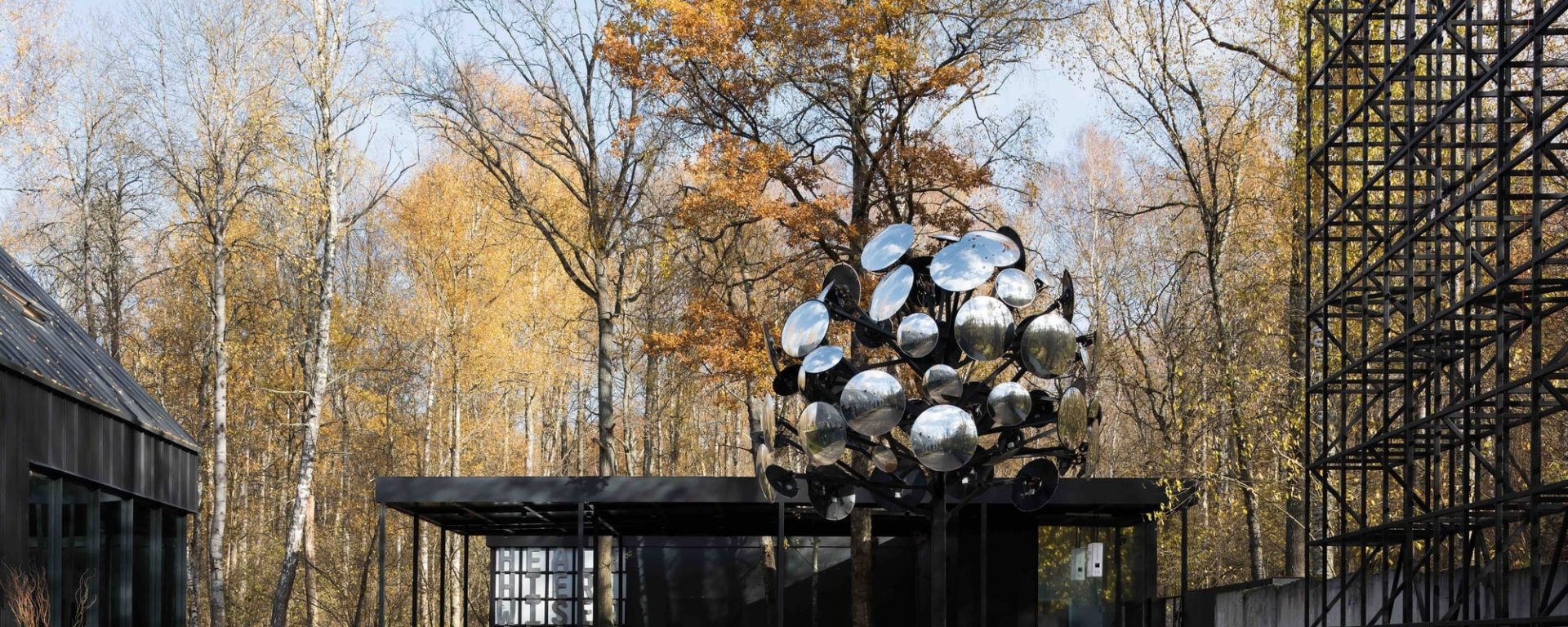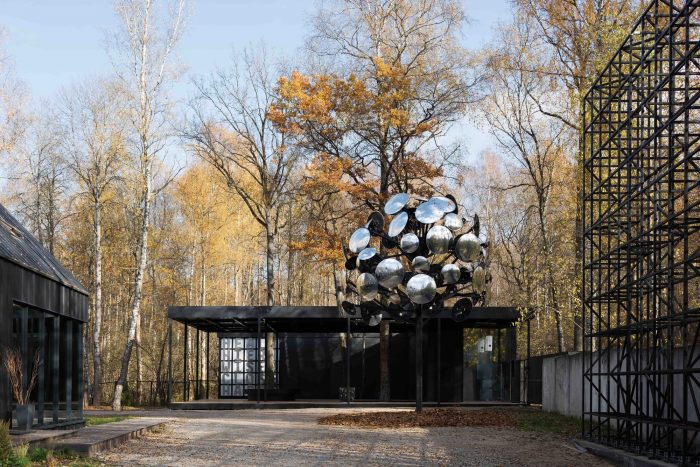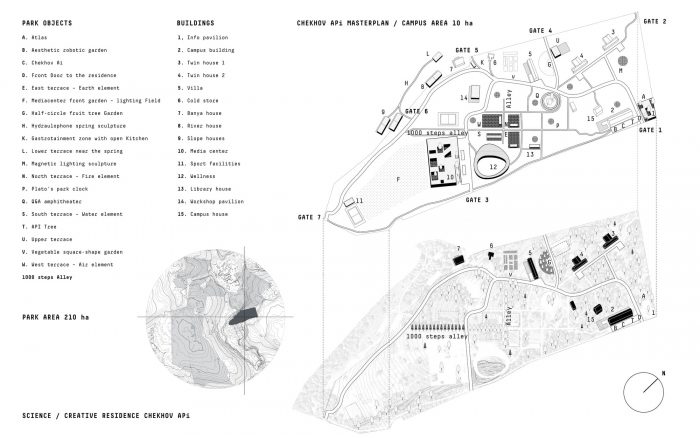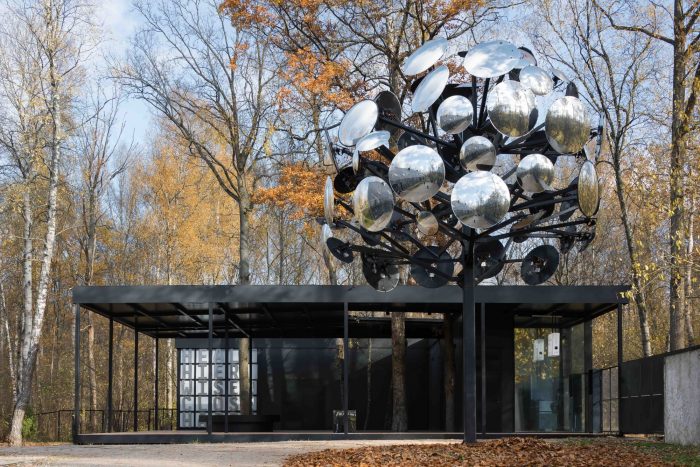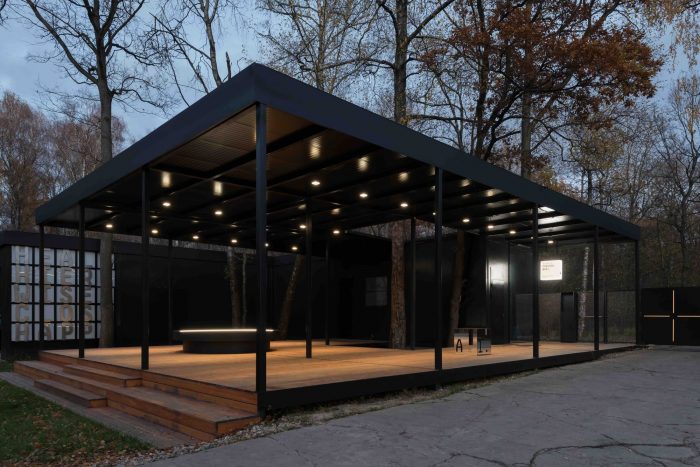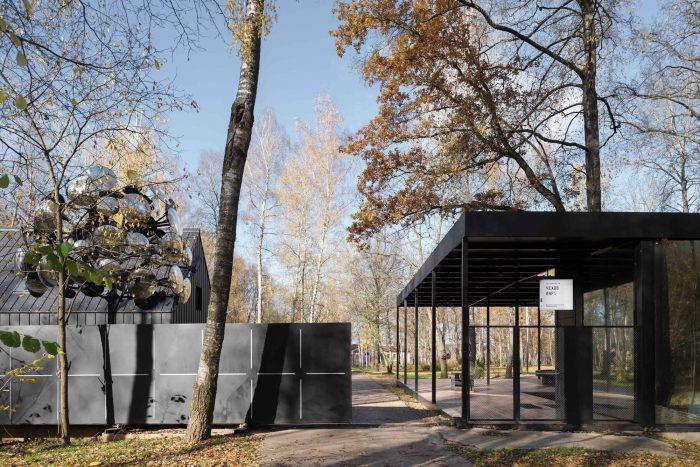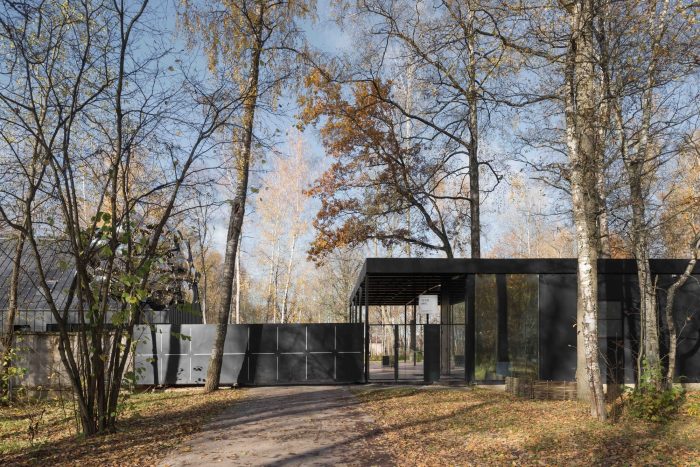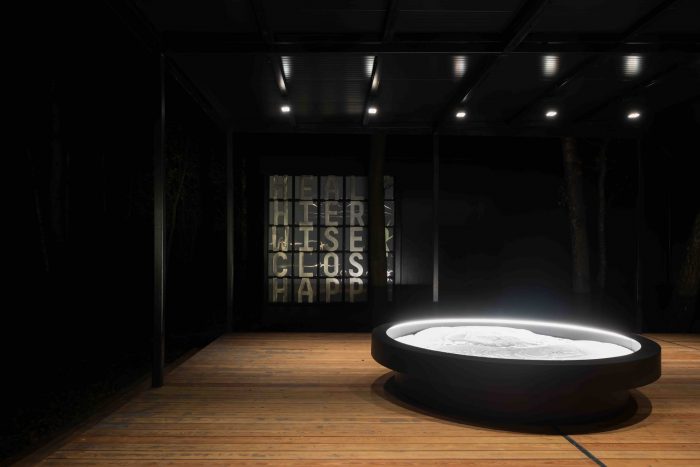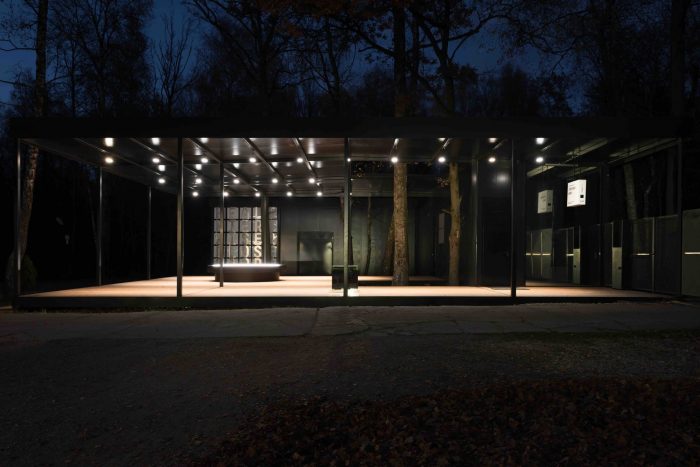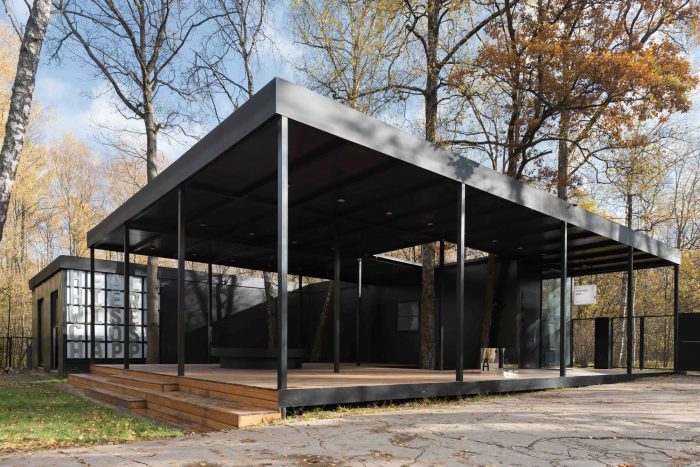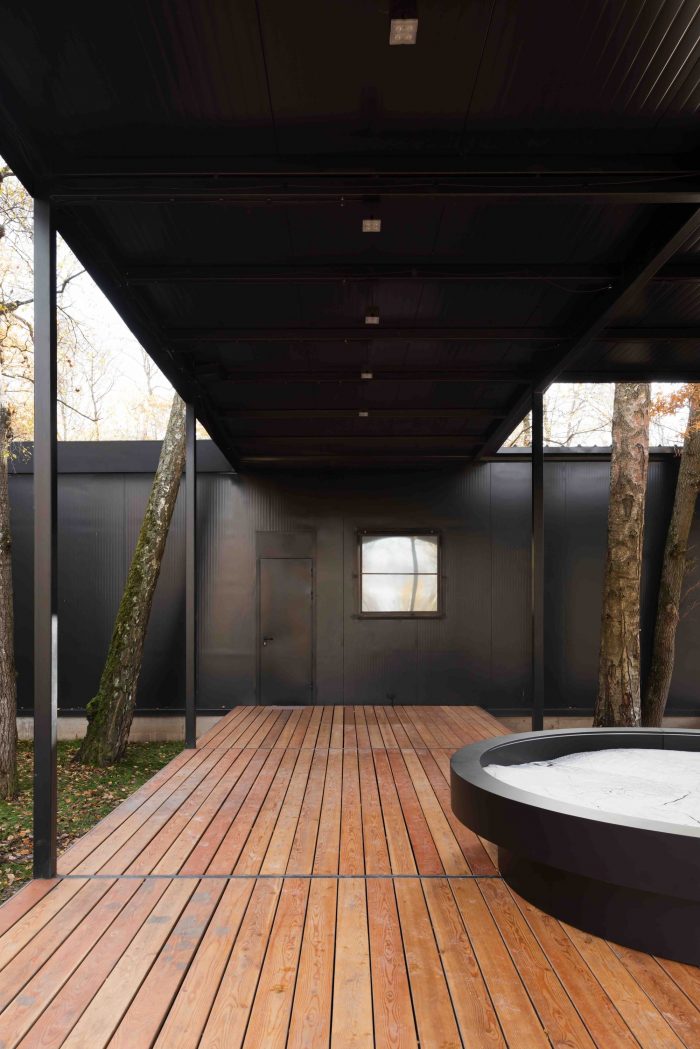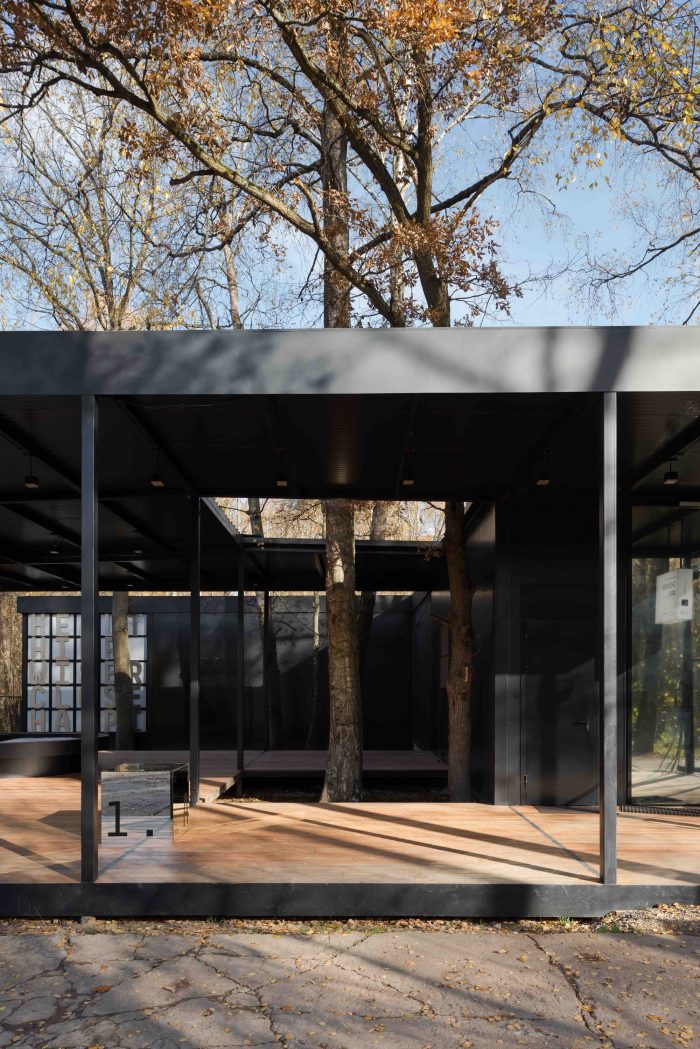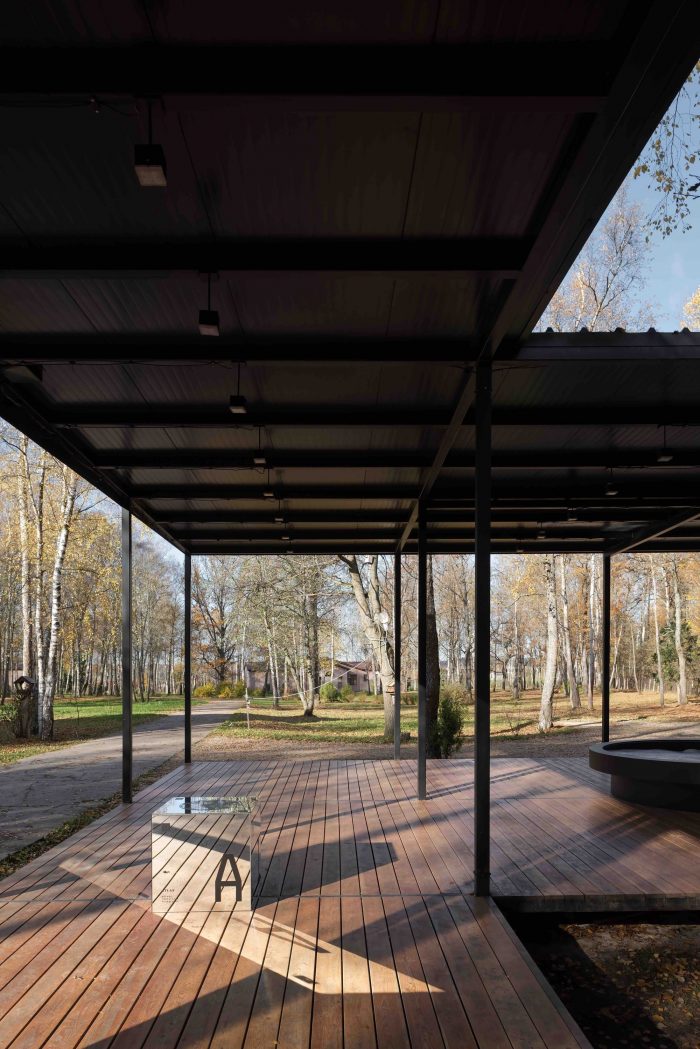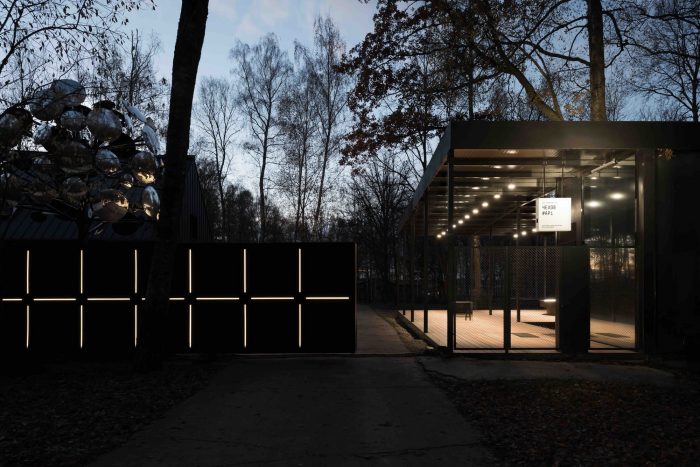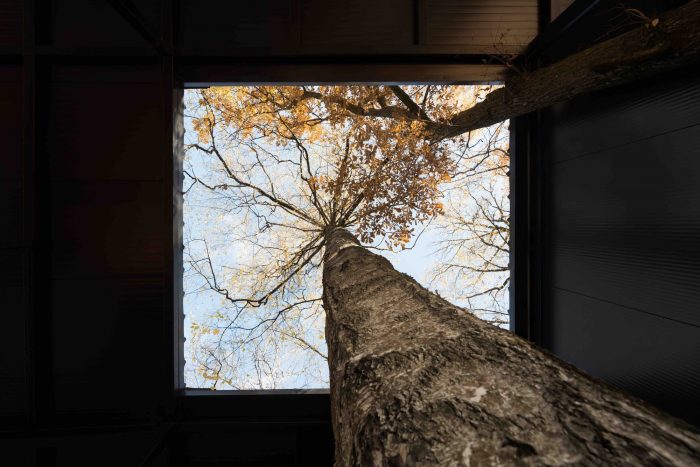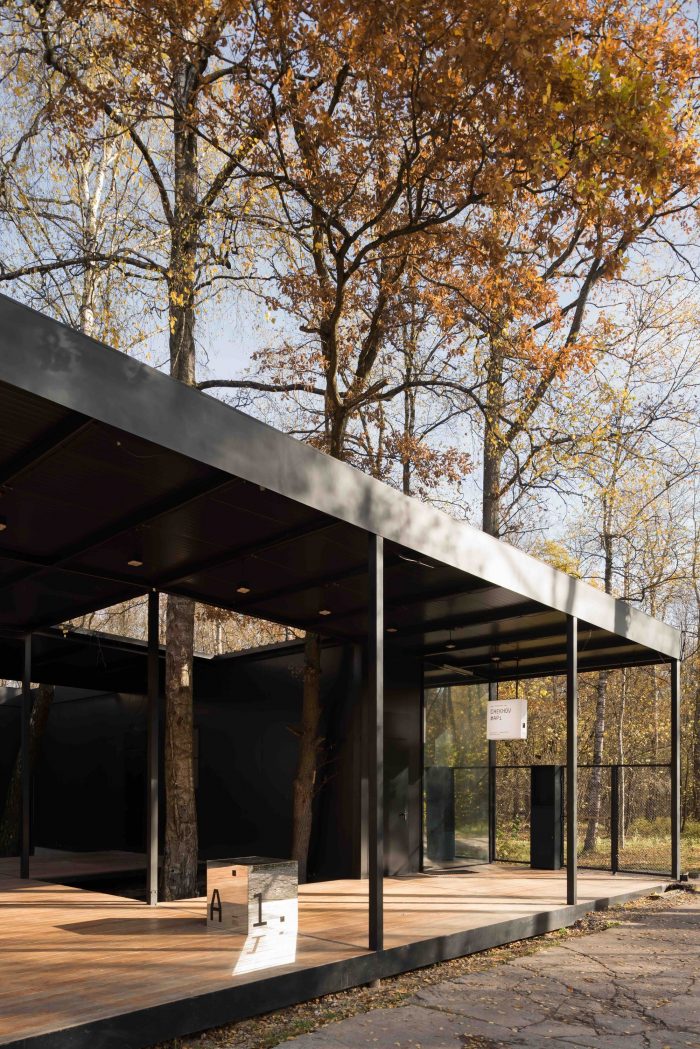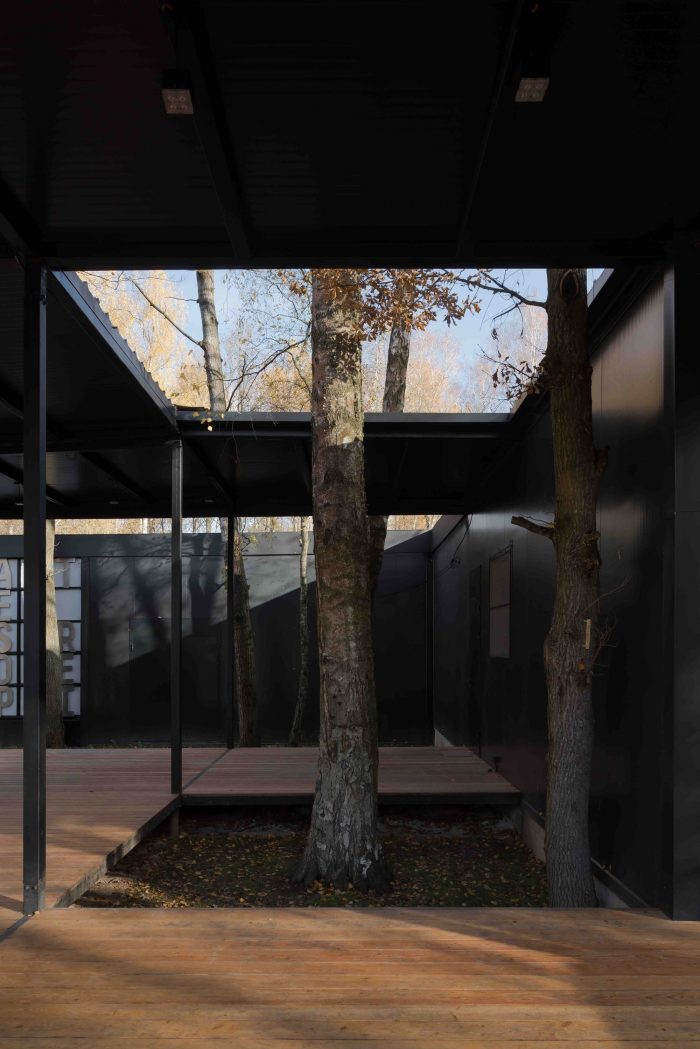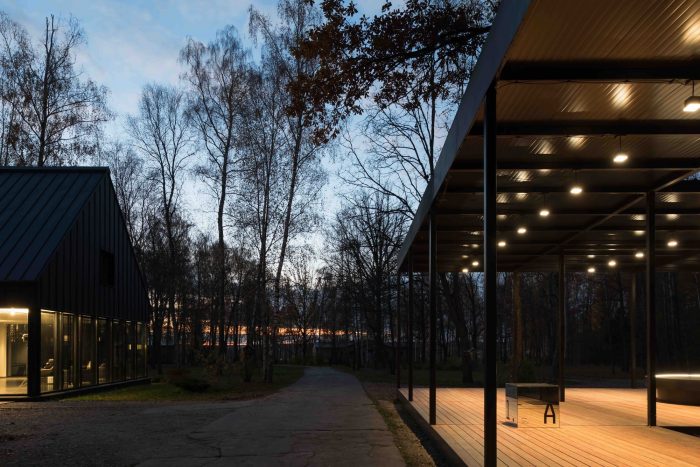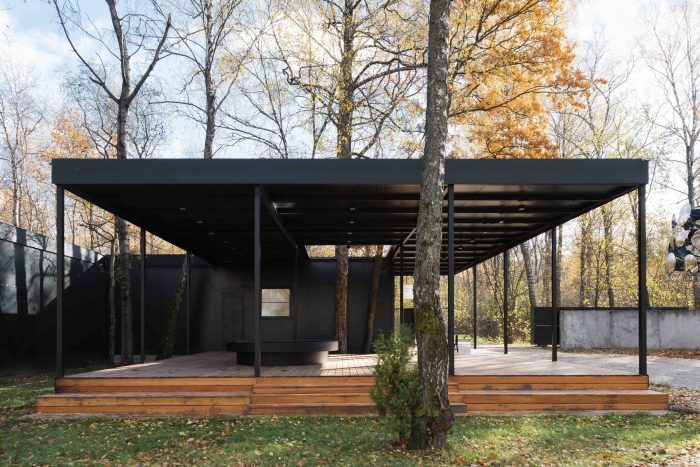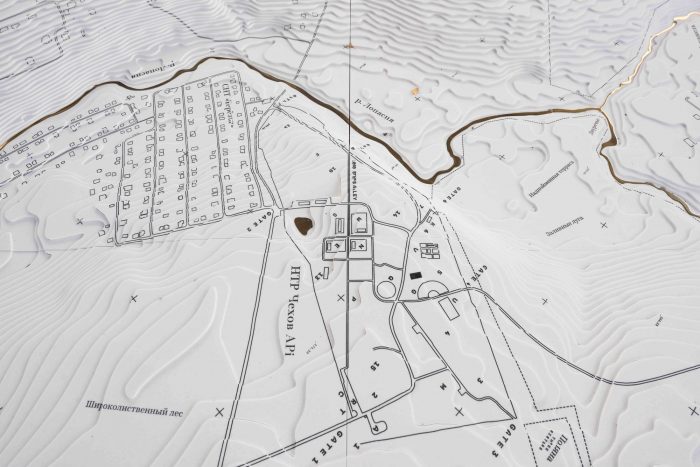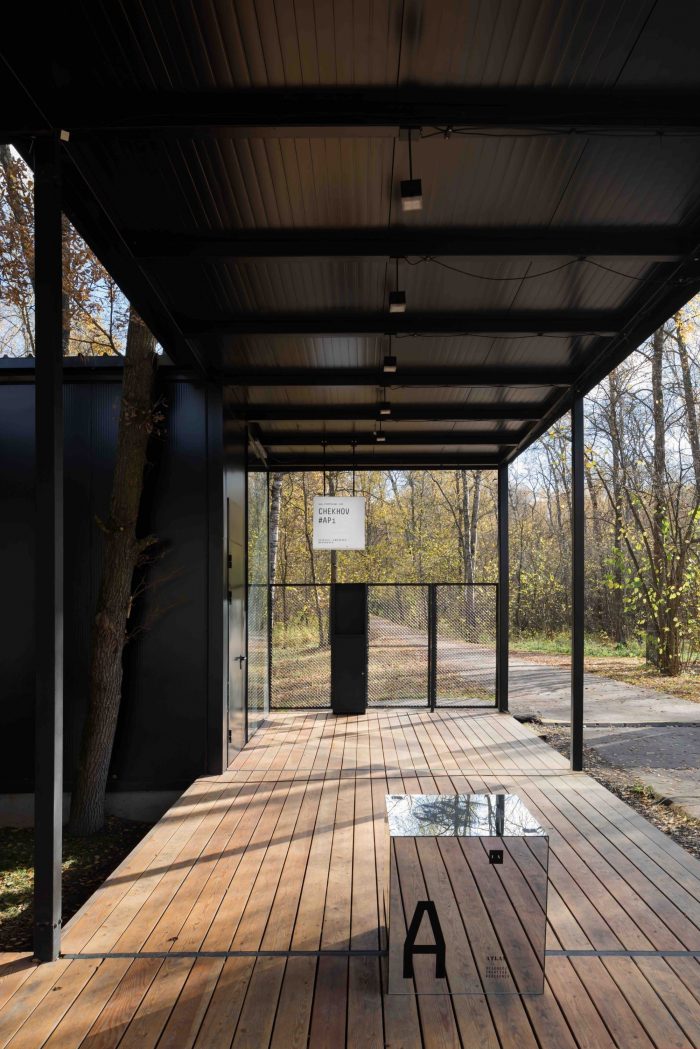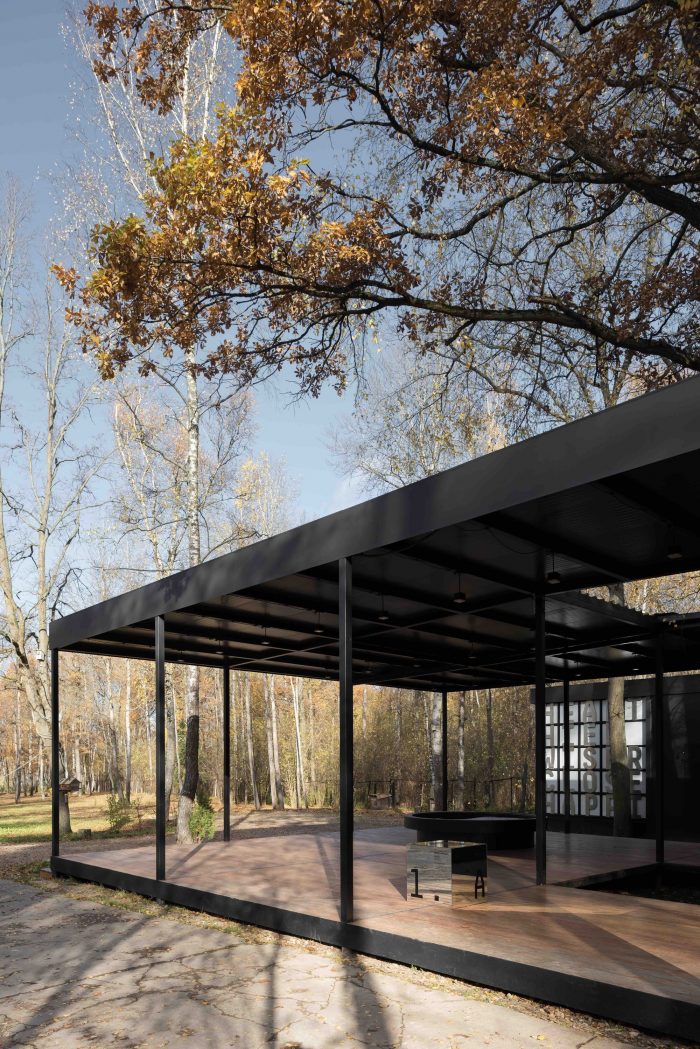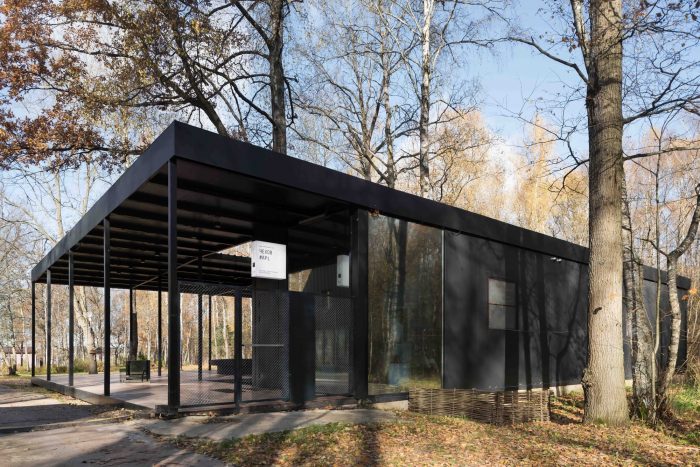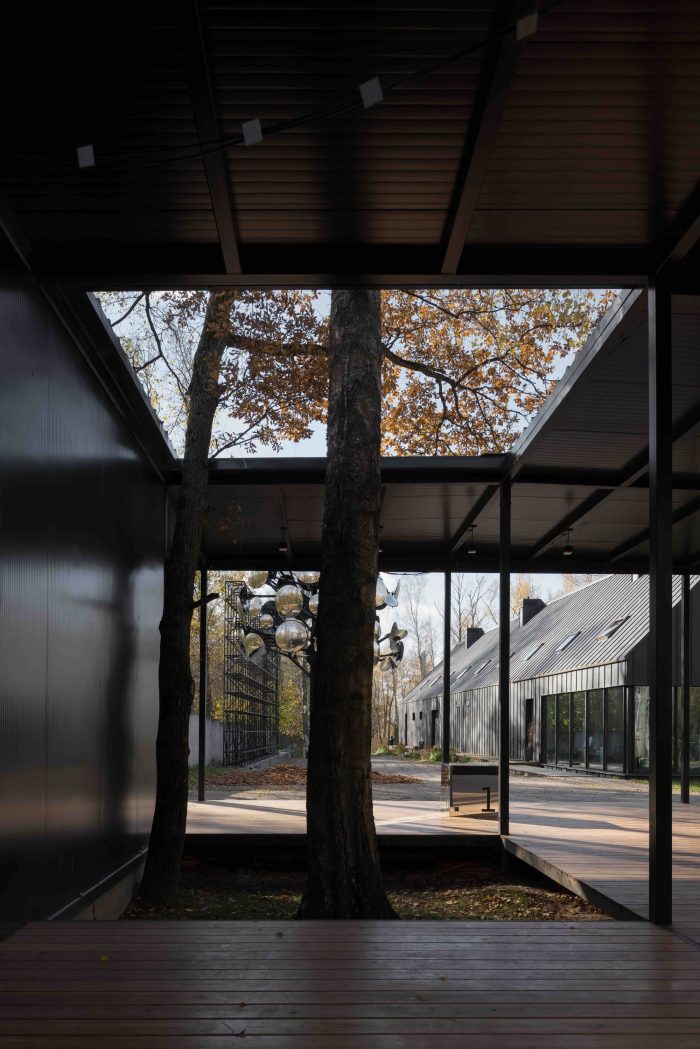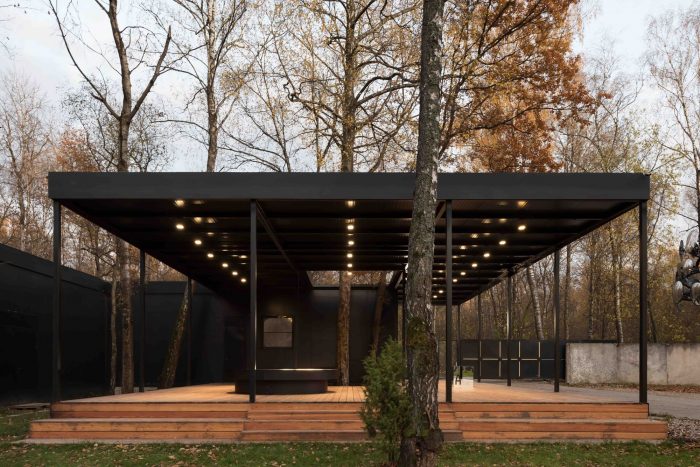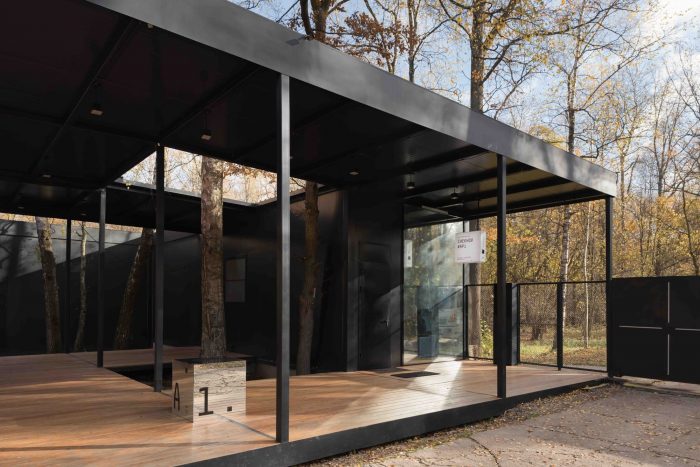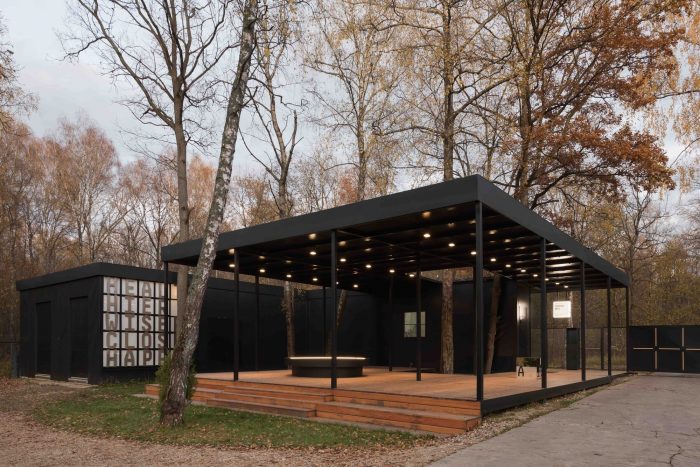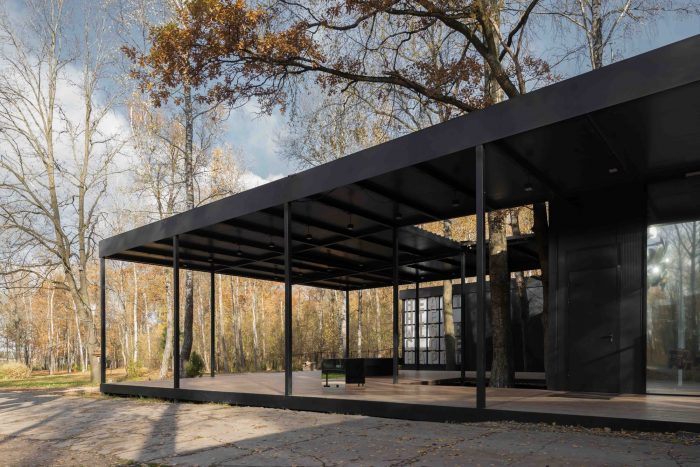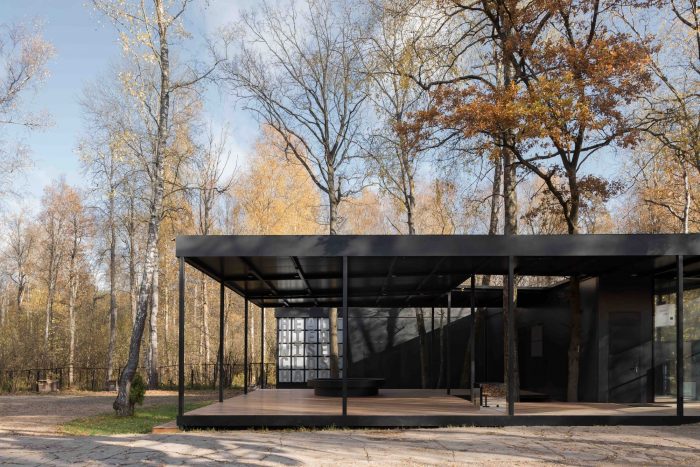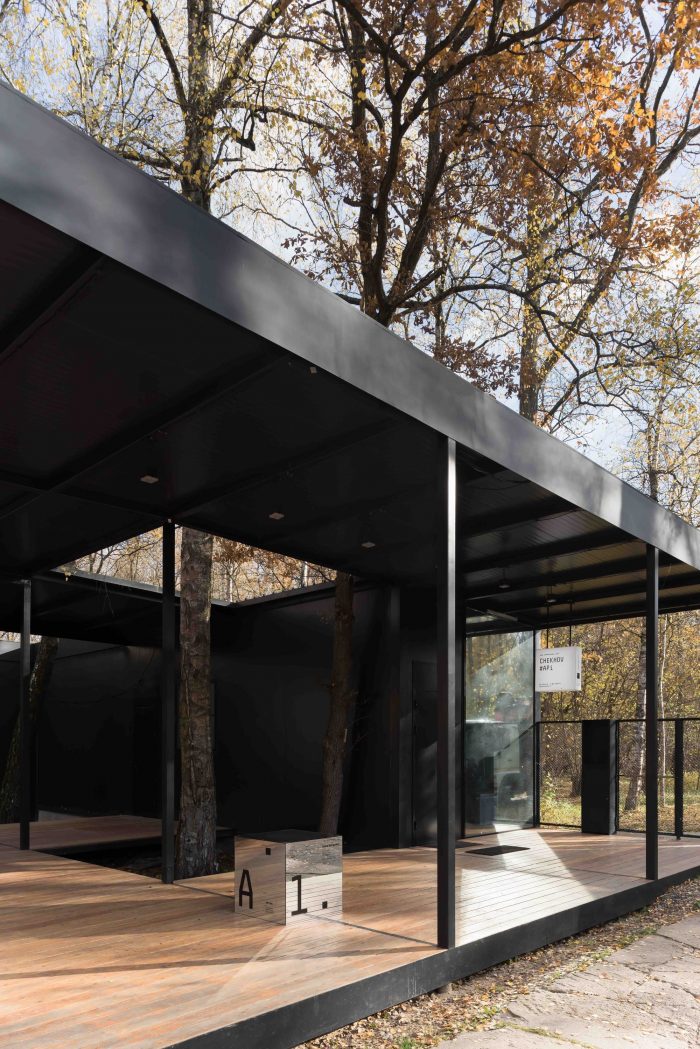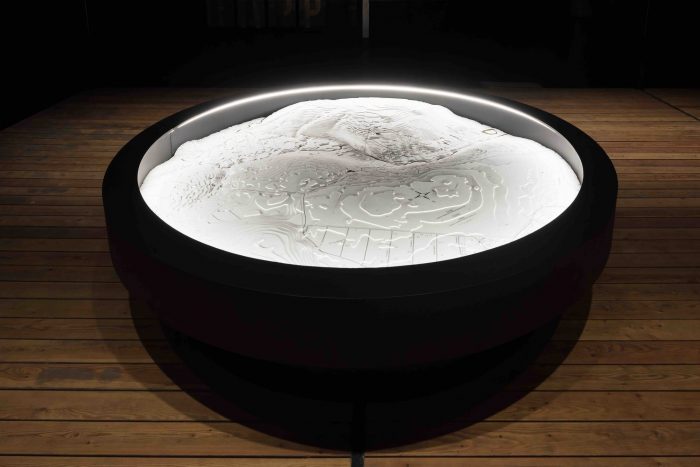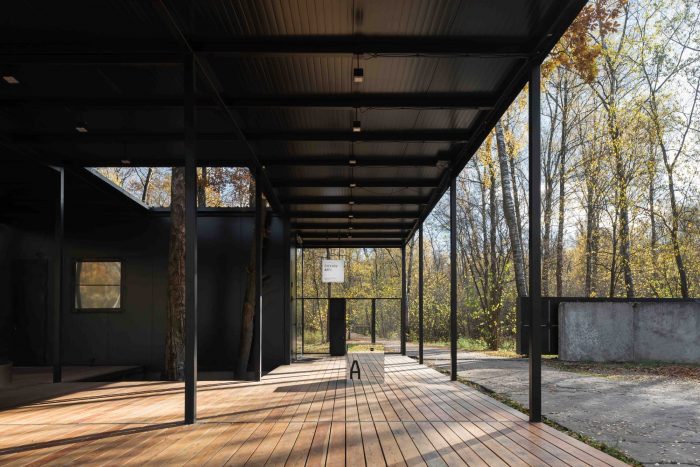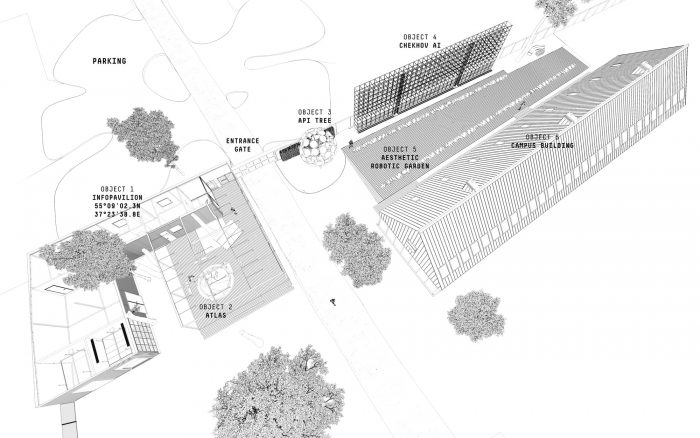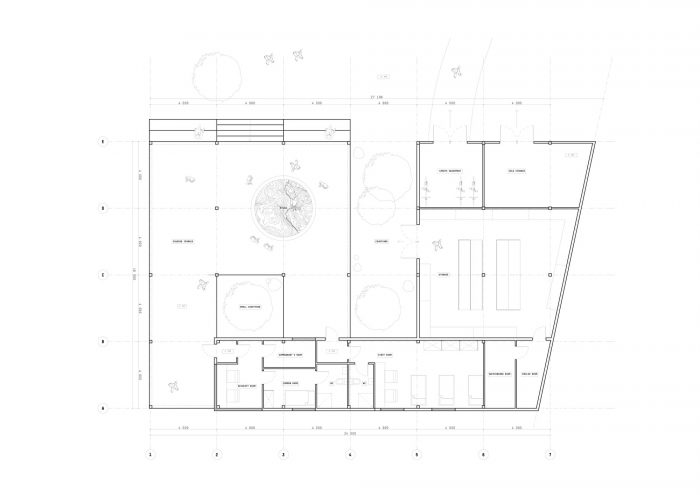契诃夫APi隐藏在一片森林中,如果没有地理定位的坐标,是不容易找到的。一个带露台的信息亭位于住宅的入口处,为新来的居民提供避雨的地方,并作为过去和现在、人造和自然之间的一个公交站。亭子旁边的入口庭院通过使用多种数字艺术对象和装置,变成了一个机器人雕塑花园。入口区让客人和居民沉浸在这个乡间地方的特殊环境中。
The Chekhov APi is hidden in a forest and is not easy to find without having geo-location coordinates. An information pavilion with a terrace is situated at the entrance to the residence and provides shelter from the rain for newly arrived residents and acts as a bus stop between the past and the present, man-made and natural. Next to the pavilion lies the entrance courtyard turned into a Robotic Sculpture Garden by using multiple digital art-objects and installations. The entrance area immerses guests and residents into a special environment of this countryside place.
科学/创意住宅契诃夫APi位于离莫斯科60分钟和60公里的契诃夫市附近。占地210公顷,包括一个教育园区(10公顷)和一个正在建设中的科学-艺术公园。第一阶段的总体规划由Meganom建筑事务所设计。第二阶段由Askar Ramazanov和Sander Lap(荷兰景观和城市设计工作室)开发。教育园区的建筑是由国际建筑事务所Meganom设计的,包括封面照片上的黑色园区建筑。信息馆由Archiproba工作室设计,入口处的艺术作品由Askar Ramazanov与科学家、媒体艺术家和制造商合作完成。
The Science / Creative residence Chekhov APi is located 60 minutes and 60 kilometres from Moscow near the city of Chekhov. An area of 210 hectares accommodates an educational campus (10 ha) and a science-art park which is in the process of construction. First phase of the masterpan were designed by architectural bureau Meganom. Second phase were developed by Askar Ramazanov and Sander Lap (Dutch landscape and urban design studio). The buildings of the educational campus are designed by international architectural bureau Meganom including the – black campus building on cover photo. The Info-pavilion designed by Archiproba Studios and the entrance area with an art-objects done by Askar Ramazanov in collaboration with scientists, media artists and makers.
信息亭包括几个功能:它是一个会议点和了解住宅的地方,一个夏季接待处,一个接收所有关于活动和住宅机会的必要信息的地方,一个体育器材租赁处,一个车间和一个仓库,一个安全检查站和工作人员的生活总部。
The information pavilion includes several functions: it is a meeting point and a place to learn about the residence, a summer reception, a place to receive all the necessary information regarding events and the opportunities at the residence, a sports equipment rental, a workshop and a storage, a security checkpoint and living headquarters for staff.
信息馆的建筑遵循住宅的品牌识别,其主要图形元素是一个数字网格。馆内的建筑仿佛用它的元素笼罩着自然环境。建筑的平面图是围绕着树干建造的。黑色与周围环境的树叶形成鲜明的对比,用清晰的几何形状切割它。4×4米长的展馆框架的均匀网格覆盖在现有的树木上,在没有树木的地方,根据信息馆的计划形成空间。信息亭体现了住宅对人和自然的开放性。亭子外墙的玻璃表面是镜面,反映了自然环境,并将其纳入建筑的主体。支撑展馆屋顶的柱子溶解在外墙的黑色中,而屋顶似乎漂浮在露台上。
The architecture of the info pavilion follows the branding identity of the residence, the main graphic element of which is a digital grid. The architecture of the pavilion seems as if to drape the natural environment with its elements. The plan of the building is built around tree trunks. The black colour contrasts with the leafy surroundings of the environment cutting it with clear geometric forms. The even grid of the 4×4 meters pavilion’s frame overlays on the existing trees and in the places of their absence forms spaces according to the info pavilion’s programme. The info pavilion embodies the openness of the residence to people and to nature. The glass surfaces of the pavilion’s facade are mirrored reflecting the natural environment and incorporating it into the body of architecture. The columns supporting the roof of the pavilion dissolve in the black colour of the facade, while the roof seems to float over the terrace.
信息亭被设计成一个小工具,在其使用和住宅发展的过程中可以安装细节和功能元素。亭子的一面墙由一个金属网格组成,网格中充满了带有字母的框架,这些字母通过磁铁连接,可以按照需要的顺序配置。这些字母构成了展馆内部花园的外墙,同时也承载了住宅的主要信息,即用四个词来表达–更健康、更智慧、更亲密、更快乐–这四个词覆盖了契诃夫-阿皮的整个领土。
The info pavilion is designed as a gadget where details and functional elements can be installed in the course of its use and the development of the residence. One of the pavilion’s walls consists of a metal grid filled with frames with letters which are attached by magnets and can be configured in the desired order. The letters form the facade of the inner garden of the pavilion and also carry the principal message of the residence expressed in four words – Healthier, Wiser, Closier, Happier – which zone the entire territory of Chekhov Api.
亭子的照明可以改变露台的外观,既可以在夜幕降临时自动改变,也可以通过手动调整任何灯光场景,包括运动跟踪。每盏灯有四个LED,两个暖色调和两个冷色调,因此信息亭不仅可以改变亮度,还可以改变落叶松木制露台反射的颜色。
The pavilion’s lighting allows changing the appearance of the terrace, both automatically during nightfall and manually by adjusting any light scenarios including movement tracking. Each lamp has four LEDs, two warm and two cold shades so the info pavilion can change not only the brightness but also the shade of colour reflecting from the wooden terrace made from larch.
信息馆的平台占据了建筑的大部分,是一个了解该地区的地方,平台上有一个专门的艺术对象,叫做Atlas。这个艺术对象作为科学和创意住宅及其周围环境的导航源,说明了该地区的地形和基础设施发展。阿特拉斯是由一层层的丙烯酸石头精巧地锯开并放置在浮雕上,强调了景观的地形,同时也展示了数字制造精度的可能性。金属环以1:1000的比例框住了400多公顷的领土,作为背光,完全改变了艺术对象在夜间的感知。灯光照亮了石头的端面,在其水平浮雕表面留下了阴影,使该物体成为其白天外观的反面。这个未来主义的阿特拉斯视图与这个地方和来到这里的居民相呼应。
The terrace of the info pavilion occupies the larger part of the building and is a place to learn about the area with a dedicated art- object called Atlas, situated on the terrace. This art-object acts as navigation source around the science and creative residence and its surroundings, illustrates the topographical and infrastructure development of the area. The Atlas is made of layers of acrylic stone delicately sawed and placed in reliefs emphasizing the landscape’s topography and also demonstrating the possibilities of digital fabrication precision. The metallic ring framing more than 400 hectares of territory in a 1:1000 scale serves as a backlight and completely changes the perception of the art-object at night. The light illuminates the end faces of the stone leaving a shadow on its horizontal relief surfaces making the object an inversion of its daytime appearance. This futuristic view of the Atlas corresponds to the place and residents who come here.
亭子构成了庭院的外墙,即机器人雕塑园,那里正在安装几个机器人雕塑,其中两个已经在安装过程中–APi树和Chekhov Ai。APi树是一棵高度为8米、树冠直径为6米的机器人树。该艺术对象由62面不同直径的镜子组成,由微型机器人控制。APi树可以观察正在发生的事情,识别熟悉的居民,并通过安装在其树干上的摄像头向他们问好。计算机化的视觉系统还能够识别人类的情绪,并通过镜子的移动做出反应,包括将30个镜子延长到0.5米。这棵机器人树位于入口处,作为管家欢迎客人和居民的到来。识别出居民后,APi树可以帮助该人打开入口大门或登记参加活动。
The pavilion forms the facade of the courtyard, the Robotic Sculpture Garden where several robotic sculptures are being installed, with two already in the process of installation – APi Tree and Chekhov Ai. APi Tree is a robotic tree with a height of 8 m and a crown diameter of 6 m. The art-object consists of 62 mirrors of different diameters controlled by microrobots. The APi Tree can watch what’s happening, recognise familiar residents and greet them using cameras installed in its trunk. The system of computerised vision is also capable of recognising human emotions and responding with the movement of mirrors, including extending 30 mirrors to 0.5 meters. The robotic tree is situated at the entrance and acts as a butler welcoming guests and residents. Having recognised a resident, the APi tree can help the person open the entrance gates or register for an event.
契诃夫-艾机器人字体雕塑是由两个机器人和人工智能控制的。8×25米的金属结构作为一个框架,两个机器人在上面移动并放置信件。机器人从结构底部的存储器中取出一封信,计算出通往单元格的最快路线,并将其放置在信的位置。文字创造了人工智能的核心,在安东-契诃夫的文学作品中接受训练,以作家的风格写作,也根据住宅中发生的事情创造文字。这座雕塑能够每天自主地写几十行。
The Chekhov Ai robotic typographic sculpture is controlled by two robots and artificial intelligence. The 8×25 meters metal structure serves as a frame on which two robots move and place letters. The robot takes a letter from storage at the bottom of the structure, calculates the fastest route to the cell and places it in the letter’s location. The text creates the core of artificial intelligence, trained in literary works by Anton Chekhov to write in the writer’s style and also creates text based on what’s happening in the residence. The sculpture is capable of writing dozens of lines per day autonomously.
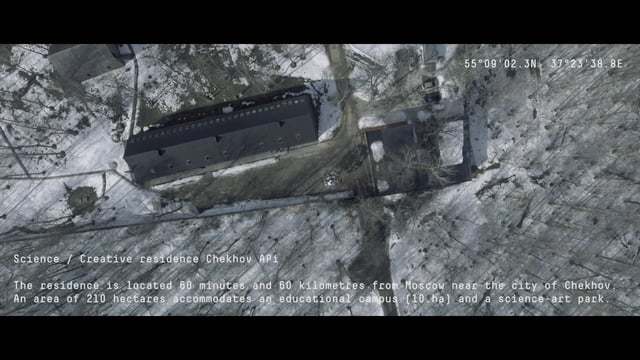
Architects: Askar Ramazanov + Archiproba Studios
Area : 380 m²
Year : 2017
Photographs :Ilya Ivanov
Master Plan : Meganom
City:CHEKHOV
Country:Russia

